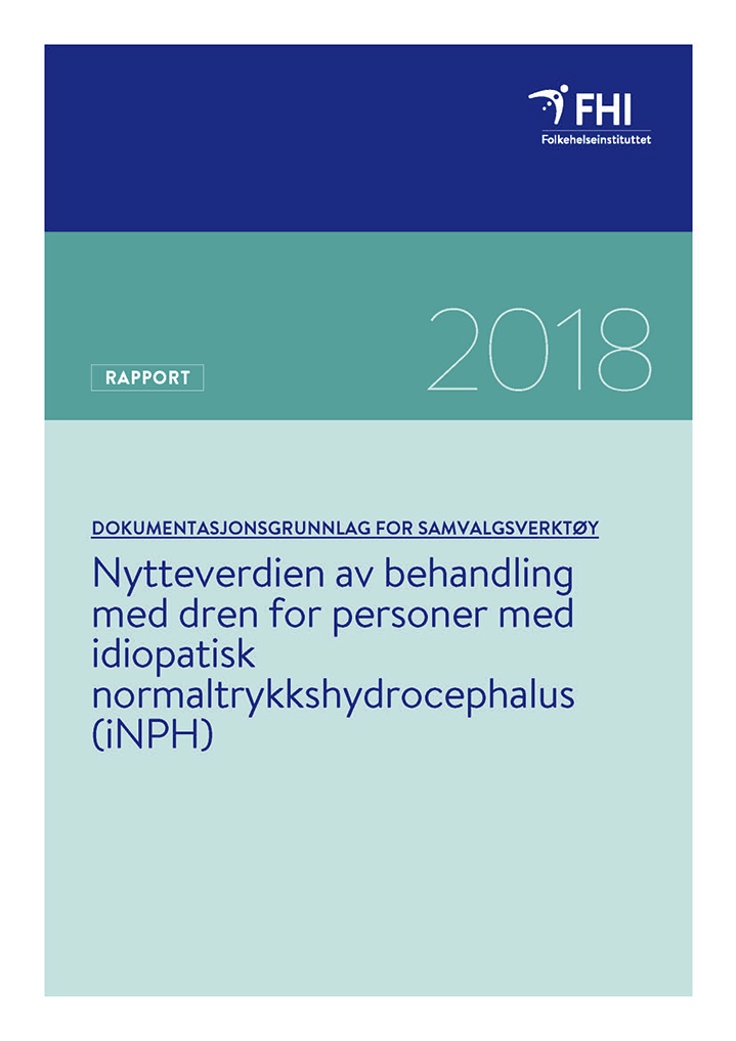Effectiveness of shunt treatment for persons with idiopathic normal pressure hydrocephalus: evidence base for a shared decision making tool
Mapping review
|Published
My treatment options “Mine behandlingsvalg” commissioned the Norwegian Institute of Public Health to find and summarize key findings from systematic reviews about the effects of shunts in the treatment of idiopathic normal pressure hydrocephalus.
Key message
Normal pressure hydrocephalus (NPH) is a condition that is characterized by gait disturbance, urinary incontinence, and memory impairment. Persons with NPH has normal cerebrospinal fluid pressure on lumbar puncture, enlarged cerebral ventricles, and are expected to improve after ventricular shunting. NPH without known cause is called idiopathic NPH (iNPH).
My treatment options “Mine behandlingsvalg” commissioned the Norwegian Institute of Public Health to find and summarize key findings from systematic reviews about the effects of shunts in the treatment of idiopathic normal pressure hydrocephalus.
We found three systematic reviews, but none had identified controlled studies about the effectiveness of treatment with shunts compared to no treatment:
The bottom line is:
None of the identified systematic reviews found any controlled studies that compared treatment with shunts versus no treatment for idiopatic normal pressure hydrocephalus. Hence, we can not determine the effectivness of shunts.


